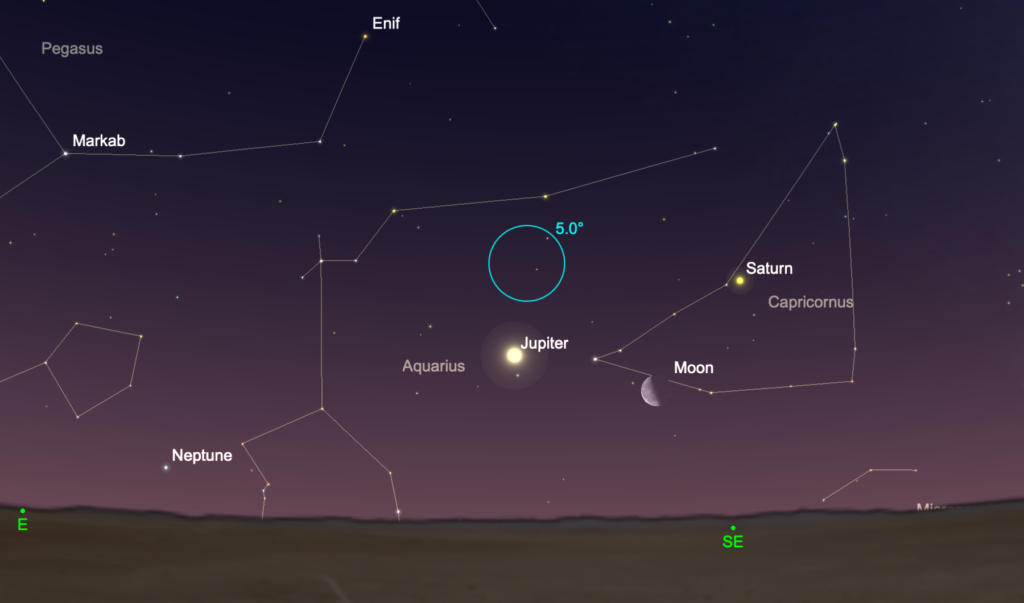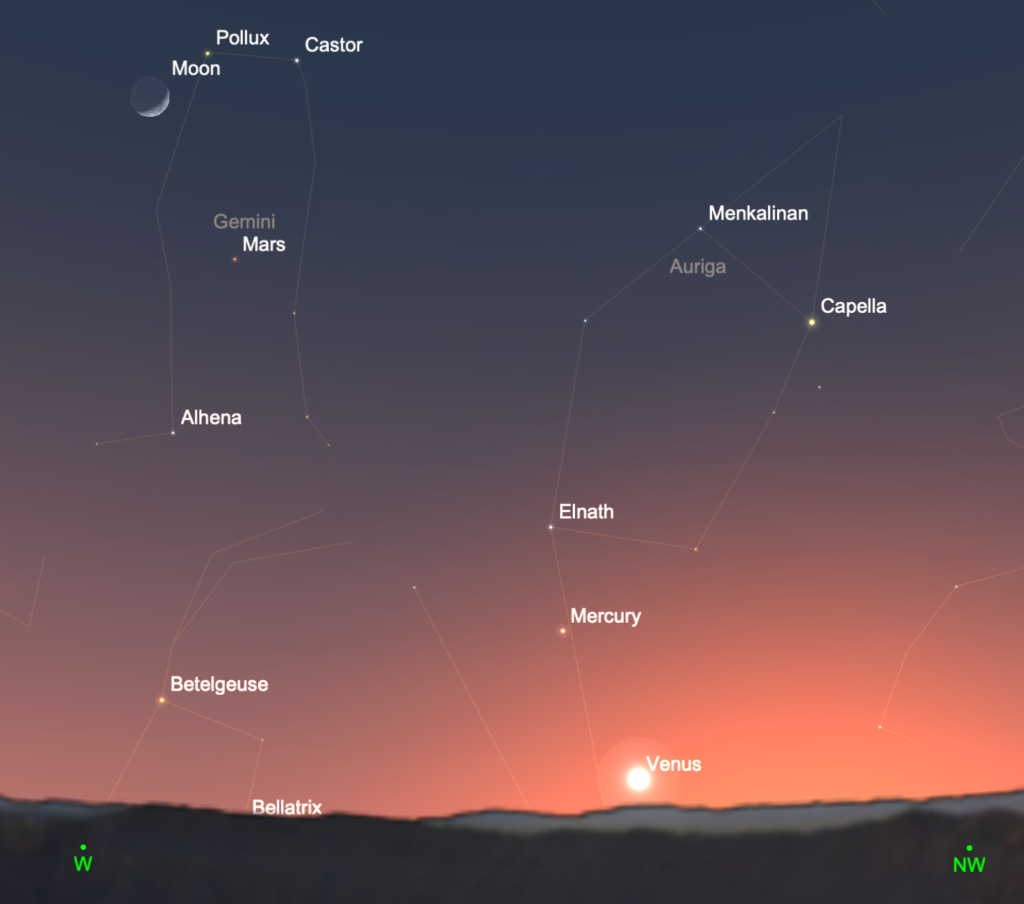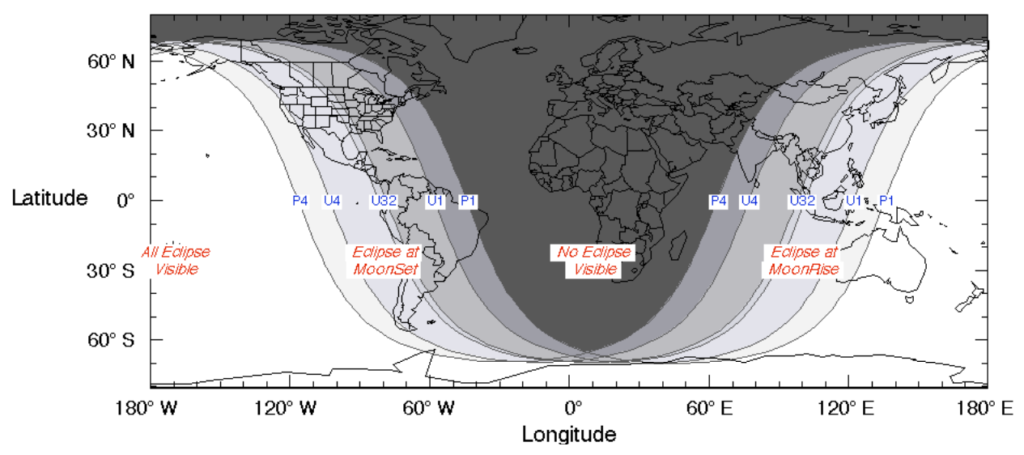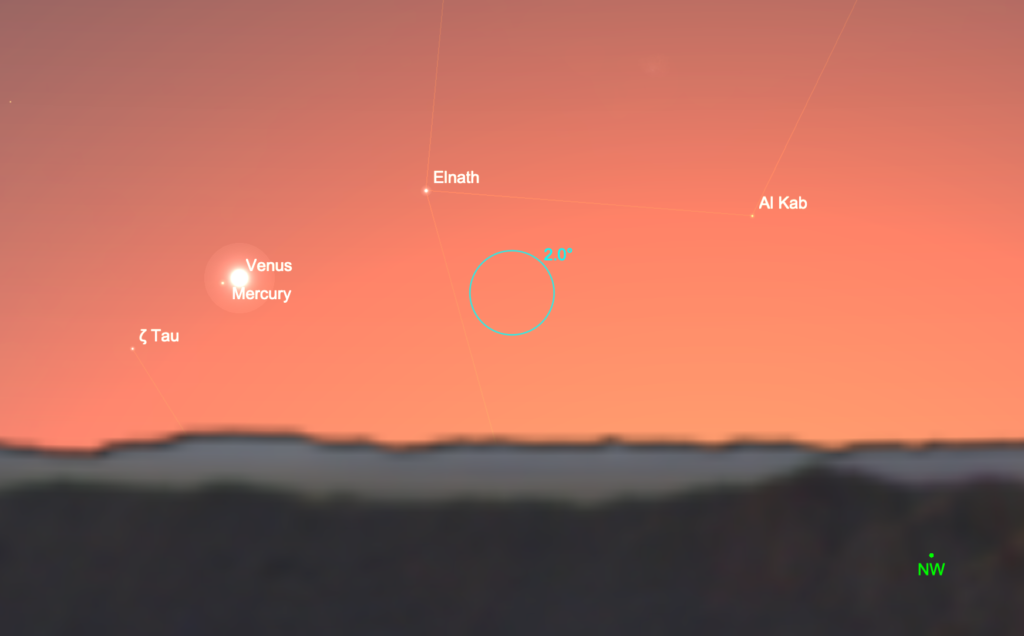
It’s another busy month in the night sky as the Eta Aquarid meteor shower peaks in the first week of May, Venus and Mercury adorn the western sky after sunset, and Saturn and Jupiter get closer and bigger in the pre-dawn sky. And for much of the world, a total lunar eclipse occurs during the last week of May, the first such event since January 2019. Here’s what to see in the night sky this month…

3 May. Last Quarter Moon, 19:50 UT
3-4 May. Look toward the southeast in the early morning hours to see Saturn and Jupiter near the last-quarter Moon. The two big planets rise earlier each night and grow closer and larger on their way to impressive oppositions in August.

5-6 May. The usually reliable Eta Aquarid meteor shower peaks. The shower runs from April 21 through May 20 each year, with many meteors still visible for several days on either side of the peak. The Eta Aquarids occur as Earth passes through a stream of icy and dusty debris from the famous Comet 1/P Halley, more commonly called Halley’s Comet. We pass through a second stream of the comet in late October during the Orionids meteor shower. Look for the meteors anywhere in the sky, preferably after midnight. They trace their paths back to a point near the star Eta Aquarii which rises in the eastern/southeastern sky before dawn. This is perhaps the best meteor shower of the year for southern hemisphere stargazers, but northern observers may see a few of these meteors too.
11 May. New Moon, 19:00 UT
13 May. Mercury moves into the evening sky in May for its best showing of the year for northern-hemisphere observers. Today the crescent Moon lies about three degrees to the left of the planet in the northwestern sky after sunset. The planet shines at a bright 0th magnitude, and observers with a clear view of the horizon have a good opportunity to glimpse this little sun-baked world. Much brighter Venus lies less than ten degrees below and north of Mercury, but it’s a far more challenging sight because of its proximity to the Sun and the horizon.

15-16 May. The waxing crescent Moon passes through Gemini, not far from the planet Mars. The Red Planet is slowly working its way towards the horizon each night on its way to conjunction in October. It’s not much to see in a telescope right now, but it’s still brighter than most stars in this part of the sky.
17 May. Moon lies close to the near Beehive star cluster (M44) in the constellation Cancer.
17 May. Mercury reaches greatest eastern elongation 22 degrees from the Sun. For the rest of the month, it quickly moves closer each night to the horizon.
19 May. First Quarter Moon, 19:13 UT
23 May. Saturn reaches its stationary position and begins its westward (retrograde) motion relative to the background stars for the next many weeks.

26 May. Full Moon, 11:14 UT
26 May. A total lunar eclipse passes across much of the Earth, the first such eclipse since January 2019. It will be visible in parts of southeast Asia, all of Australia, New Zealand, and Hawaii, most of Alaska and central and western Canada, all of the lower 48 states, all of Mexico and Central America, and most of South America. The map above shows the visibility of the eclipse; in some parts of North America, for example, the Moon will set as the total eclipse is in progress. This event is not visible in Africa or Europe. This link will help you find out the timing of the eclipse in your area.

28 May. Venus sits less than a degree from Mercury low over the northwestern horizon after sunset. At magnitude -3.9, Venus is bright enough to see without optics, but Mercury (magnitude +2.5) needs at least a good pair of binoculars to pull it from the twilight glare. If you look for these two inner planets in a telescope, wait until the Sun sets below the horizon for safety’s sake. In a telescope, Mercury will appear slightly larger, about 11 arc-seconds across, with only 10% of its disk illuminated, while Venus appears more than 95% illuminated and spans about 10 arc-seconds.